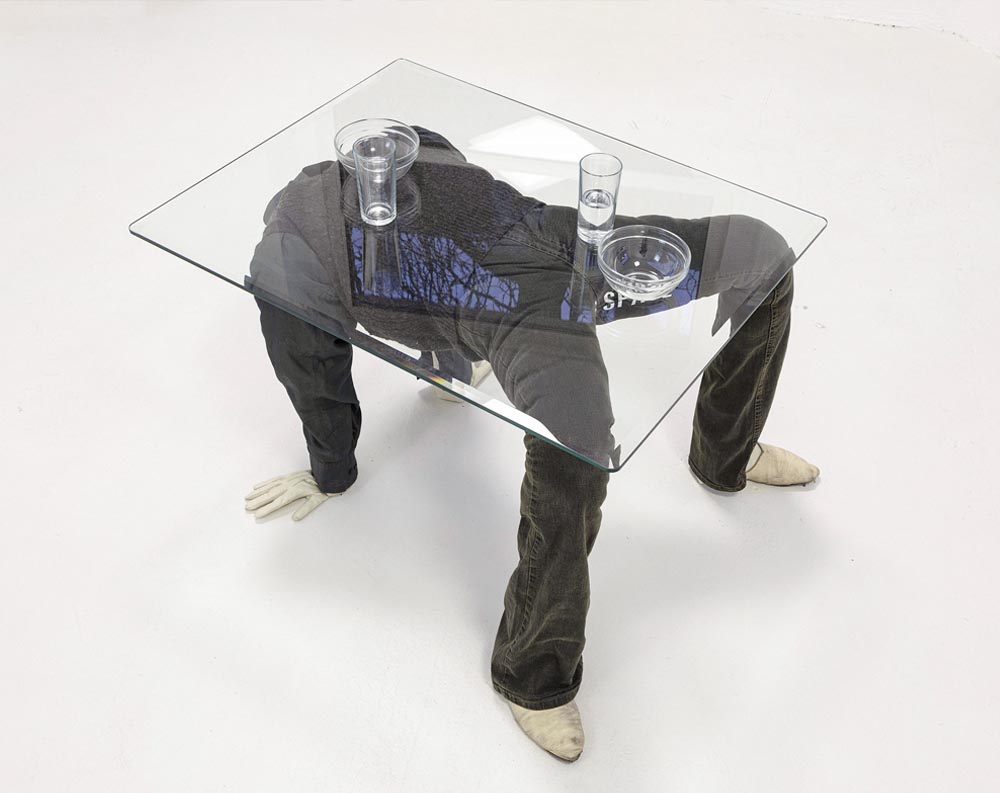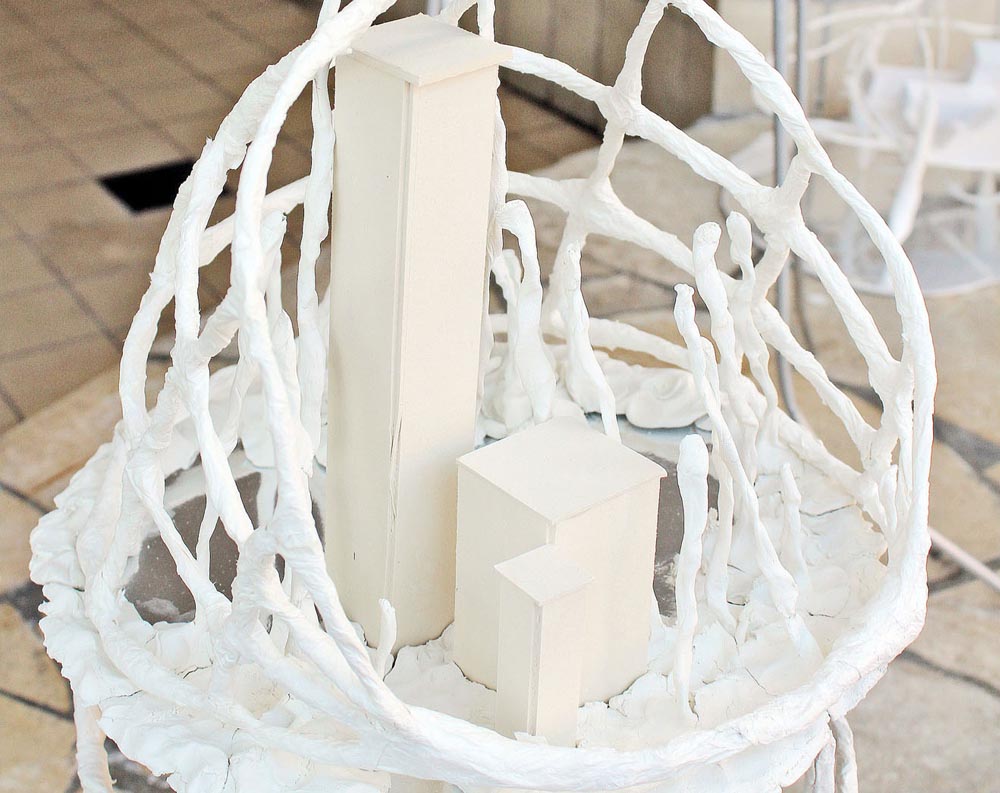OFLUXO
Liquid Language:
An Interview with Elspeth Walker, author of Drink Deeply & Dream
March, 2021
By KLLR DNST
Elspeth Walker is a Brooklyn based writer and artist who published Drink Deeply & Dream (Killer Dentist Press, 2020).
The short book features prose and experimental writing about faux vampires who peruse online forums and watch phlebotomy tutorials from nurses on Youtube as a way deepen their romance and cope with the insidious effects of capitalism on mental health.
In the group show, Mirror vs mold which ran earlier this month at Other Subjects, excerpts from Drink Deeply & Dream cover the walls and a print of candles in dim lighting by Hex Kim looms near the phrase IN PERPETUUM, which means “forever” in Latin. Walker’s text pieces function as “text-turned-art,” like headlines spread across walls, billboards, and shirts. Her writing uses language to highlight ideas, feelings, and concepts over more traditional visual forms. We spoke with her about the genesis and process behind her book in which her confessions transform into art.
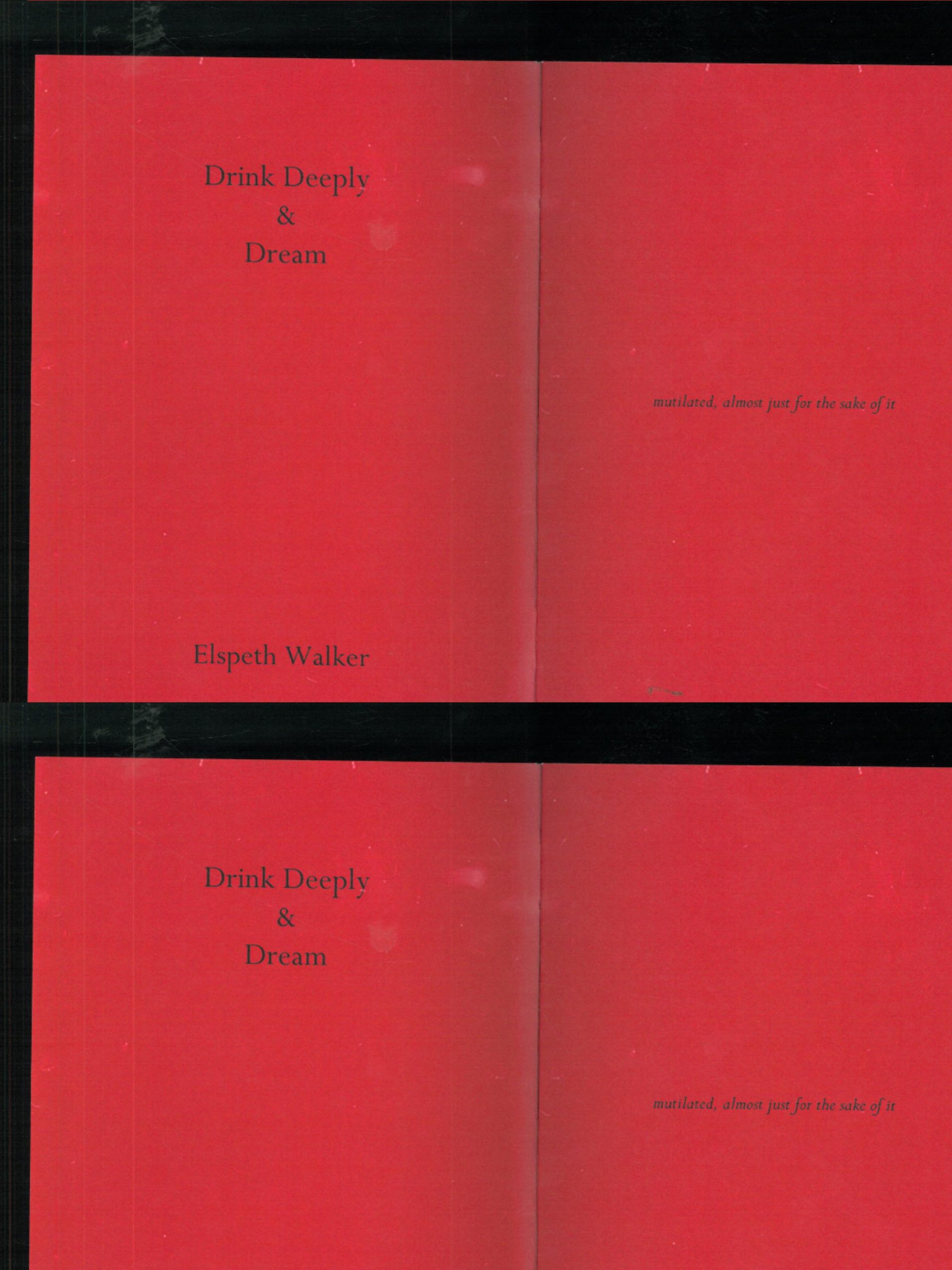
MZ: Drink Deeply & Dream began as a performance art piece at Signal Gallery (Bushwick, NYC) a few years ago, can you tell us about its genesis and evolution?
EW: I’d been working on the writing for a while before my friend Nik Planck asked me to do a performance as part of his show with Elizabeth Karp-Evans, New Stage, New Badges, where they took over the back room at Signal and hosted a packed month-long lineup of really great performances by artists, musicians, writers, etc.
The work is about a failed durational performance piece I’d conceptualized with my partner where we would drink as much of each other’s blood as possible in a sitting. The performance was meant to be this like very extreme account of what it feels like to desire. Love is absolutely insane, scary and self-annihilating but also thrilling and ecstatic. The piece we’d planned proved impossible to achieve for sort of obvious logistical reasons, but I felt that the impulse behind it, really the fantasy of it, and also the fact that it was doomed to fail, were all very compelling things. So I started from a place of just trying to document or record what we’d tried.
The text was much longer at first, and I’d thought to possibly make it a novel (with other themes) or at least a long audio piece; once I edited it down for the Signal performance I realized it was stronger that way. I then cut it down even more for the book with Killer Dentist Press, and added some newer thoughts about pain. There are so many ways to recall an event, to hold it in your mind; I like all these ways of the writing existing in the world slightly differently, but the sort of glowing ember at the heart of it (the gesture of the abandoned blood performance) stays the same.
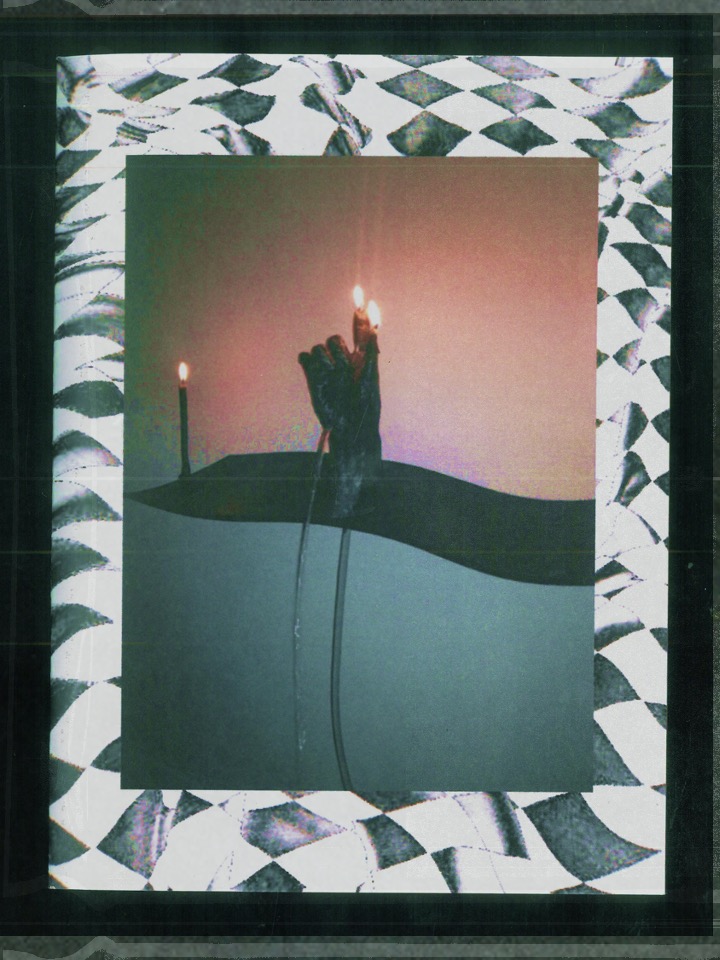
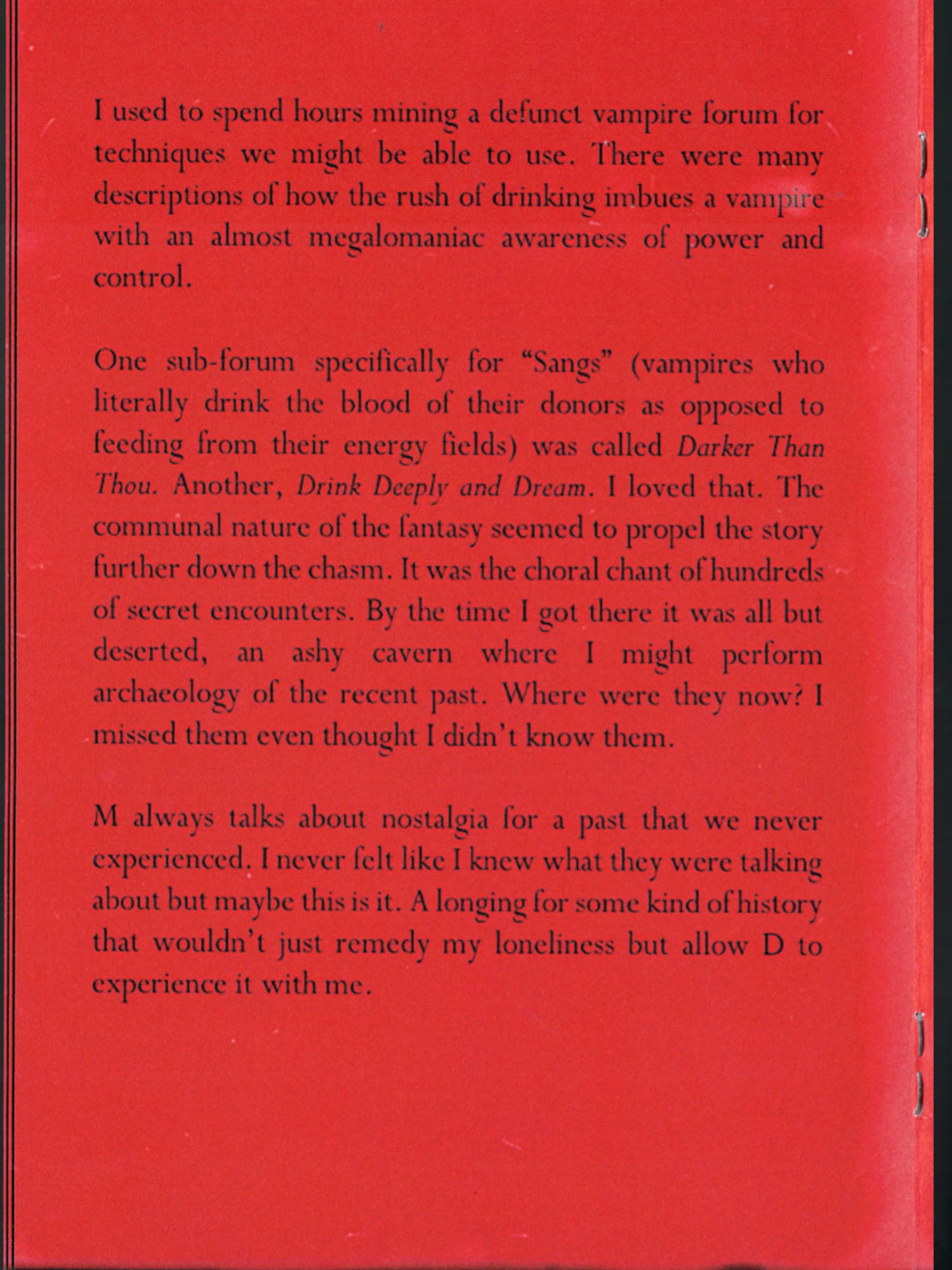
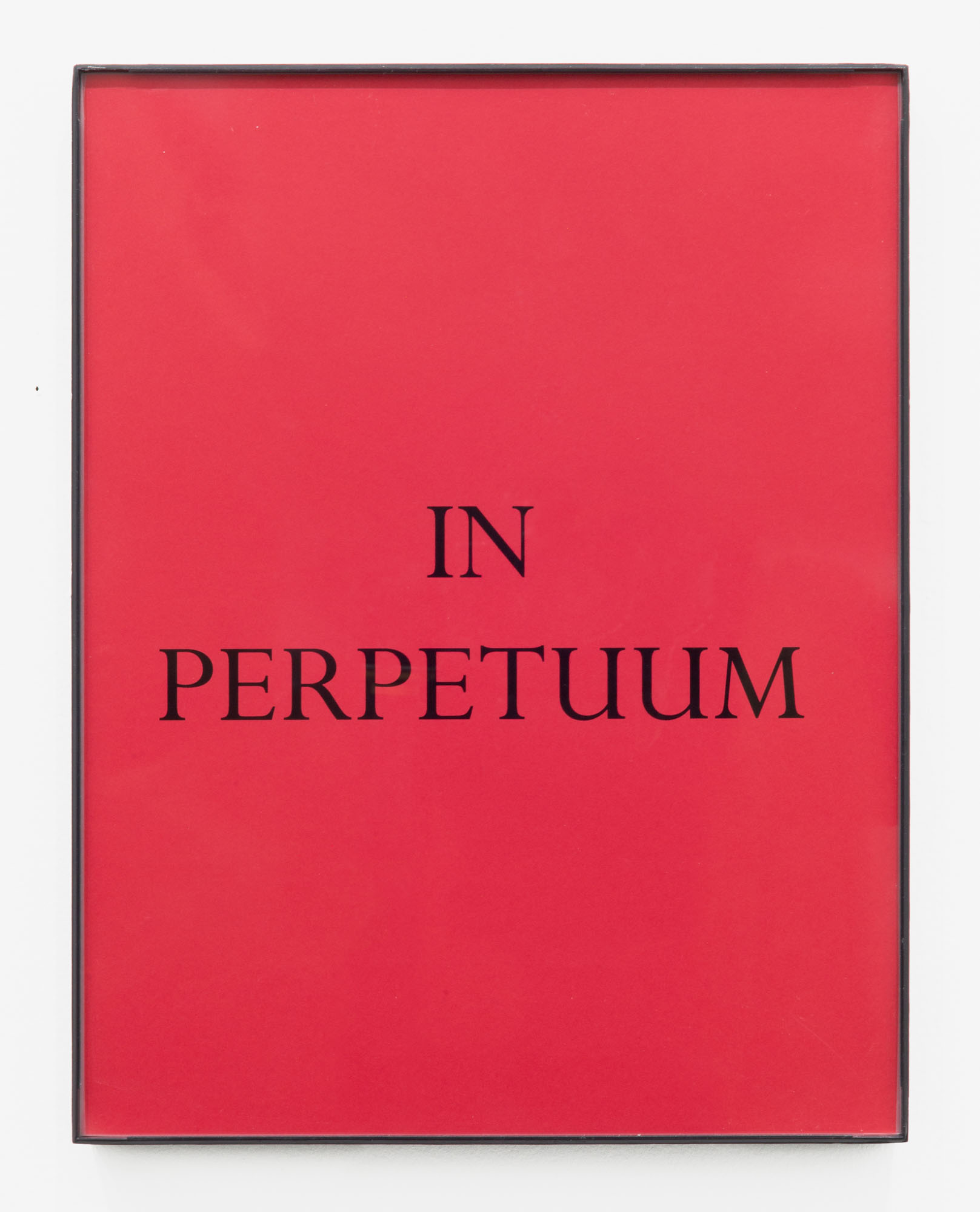
MZ: As a visual artist, why did you turn to language? Does your work function as messages or images?
EW: I’ve actually always been a writer primarily. Messages, or a kind of hyper-emotional communication, is definitely most important to me. The sculptures documented in Drink Deeply & Dream were initially unrelated to the writing, but I started to realize that they were part of the same lexicon. There’s a lot there about a kind of arcane or private significance, secret worlds, personal ritual, power, surrender, doom, time, ecstatic self-destruction, the body as a burning candle.
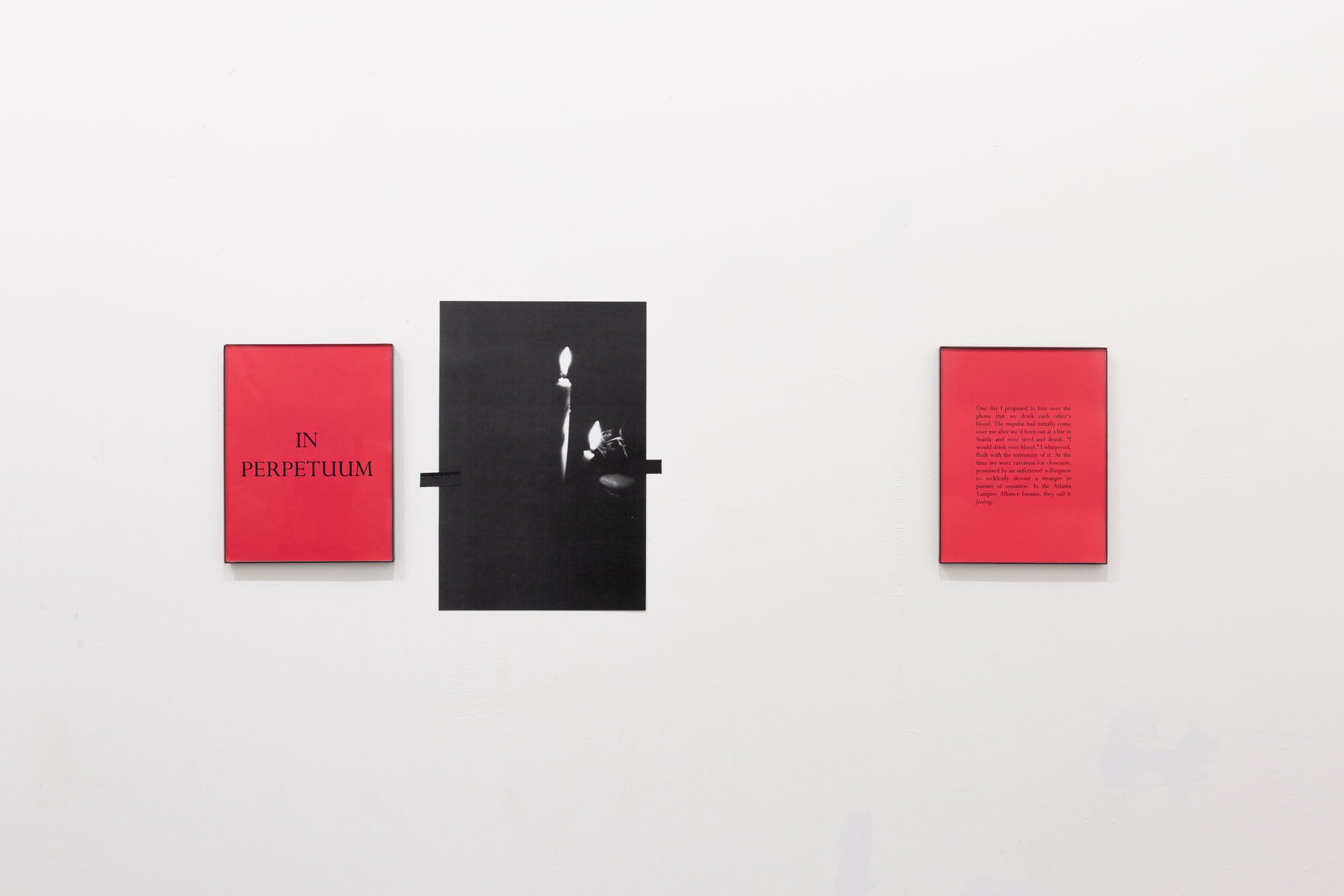
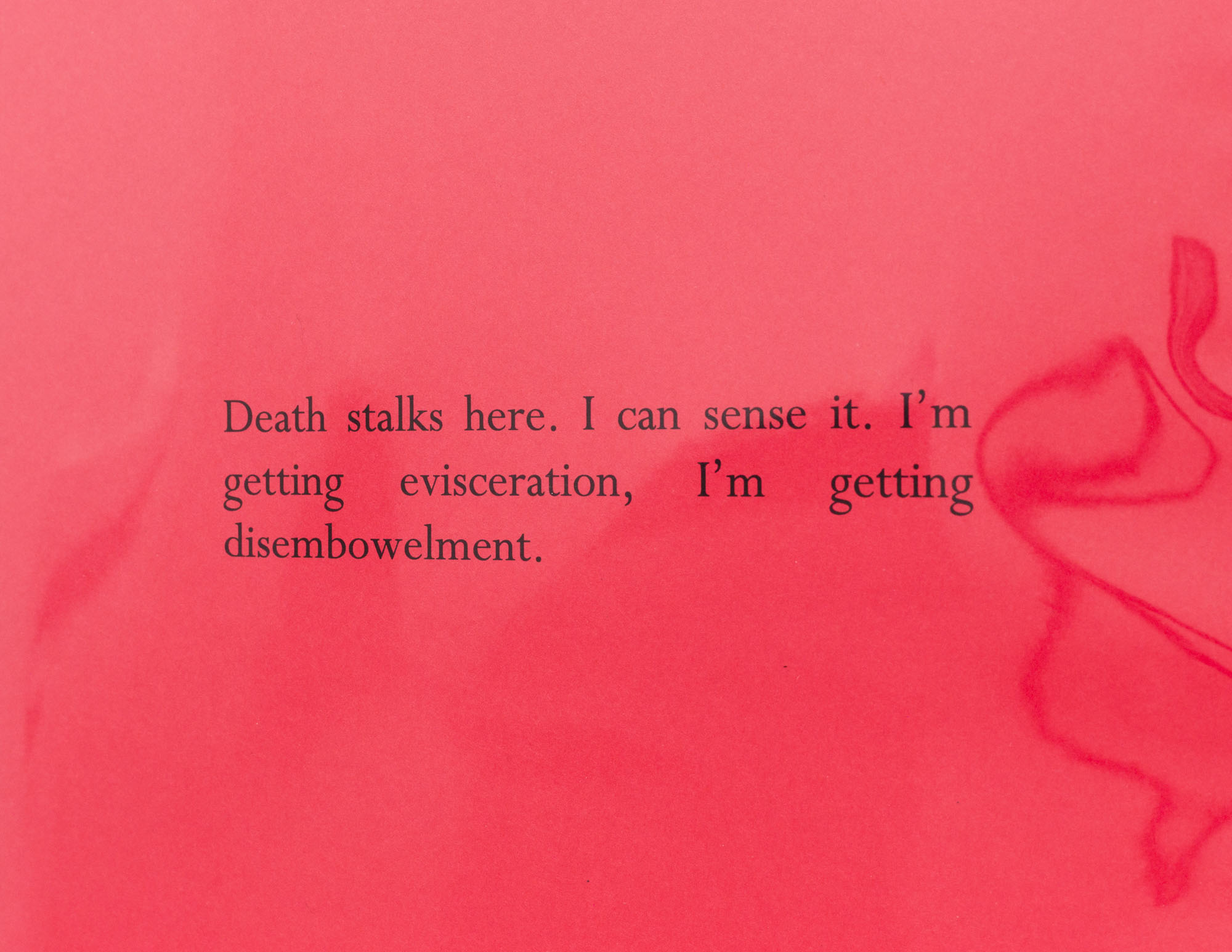
MZ: Were you concerned with the audience’s interpretation/engagement with the text and/or its level of intimacy?
EW: I kind of never really know if people are going to understand what I’m saying. I mean, I hope that they will? And I’m always trying to make things as clear as possible, or uncover a way of expressing complex emotional states that might invite people to feel with me… but I guess because my subject matter is often so extreme I always accept in the back of my mind that people might be freaked by or just not into it. But I don’t know that there’s another way for me to make my work, so I feel like if I think of maybe one person I know that I’m writing to, who I think will get it, and I feel like they’d like it, then I’ve succeeded in my mission.

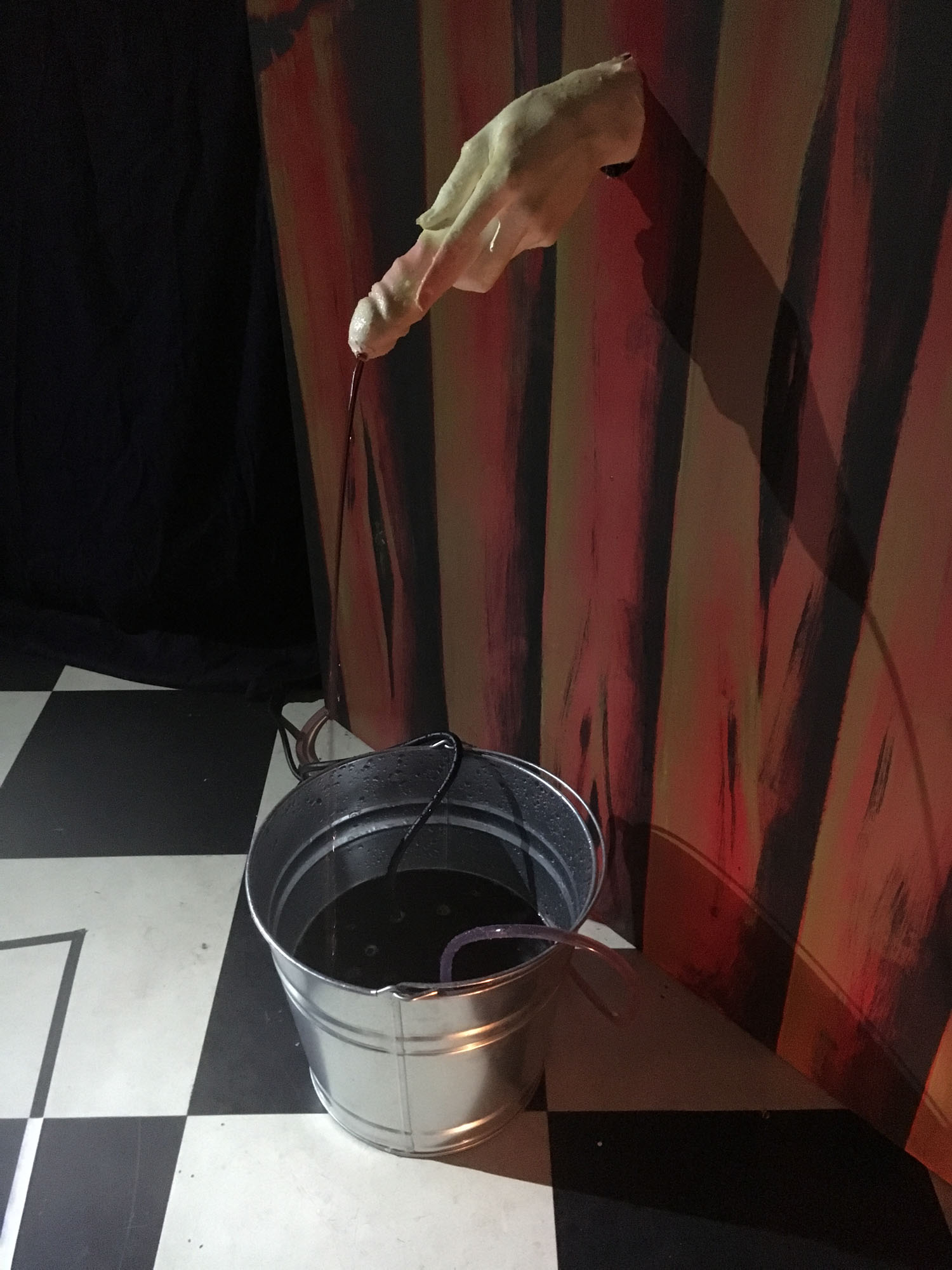
MZ: How do you use confession and self-exposure in your work?
EW: I’ve always been interested in the texture of experience. Like, why do things move me the way they do? Trying to conjure an answer to that question is why I’m interested in writing. I think when it’s really good, writing is a sort of excoriation of the sensations of being alive. I am not sure how else to get at that other than being radically open about what it is that I’ve experienced, and interrogating it deeply to get to some kind of resonance about the quality of feeling. I have also always prioritized being in love.
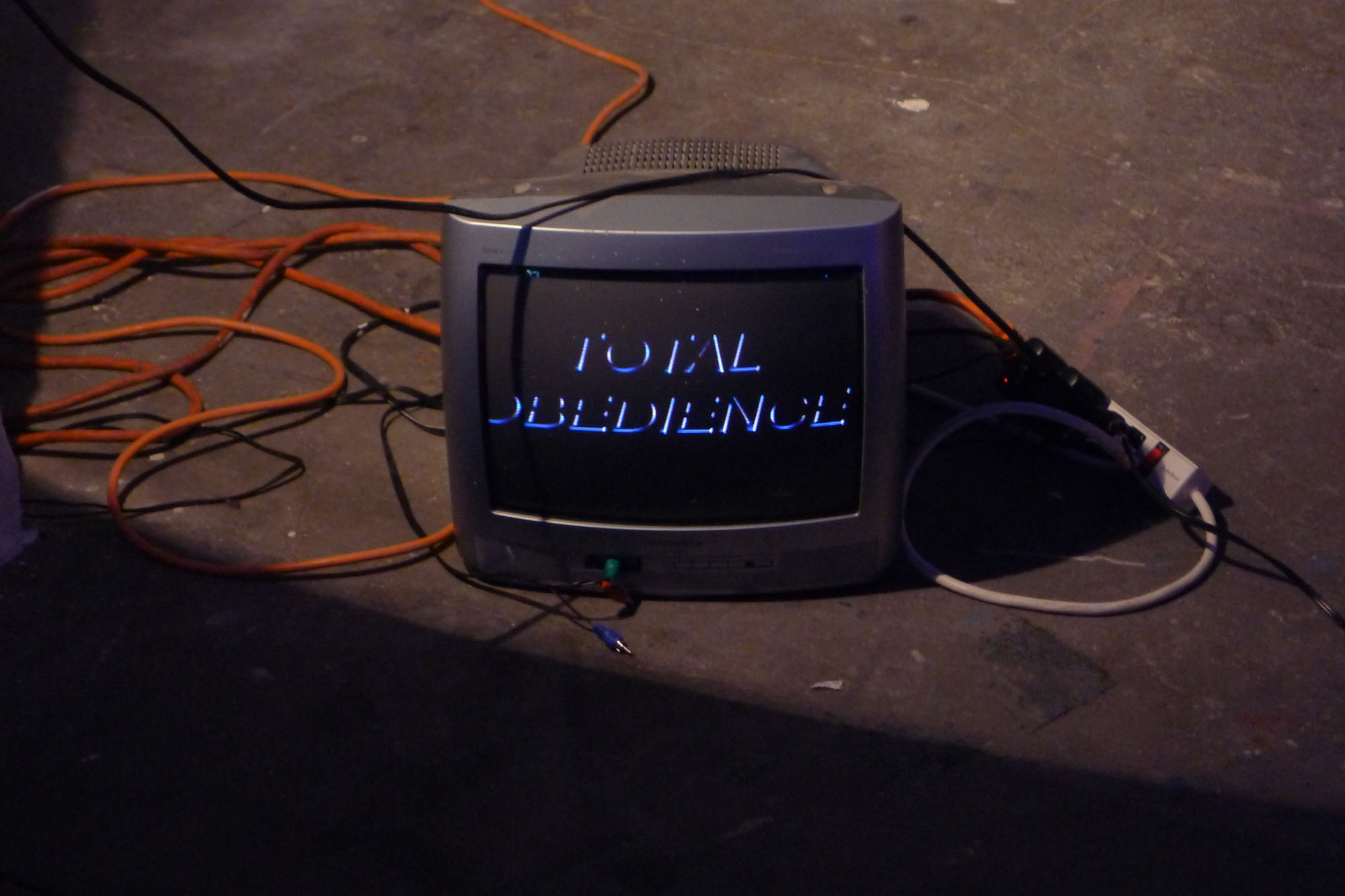
MZ: About confessional writing, it reminds me of what Chris Kraus once said: “writing [is like a] an exorcism” and that one needs to write them before they can go on. She also mentions that radical confessional literature about women’s sex and romantic lives have long been criticized, do you feel that is true?
EW: I don’t know that I want to make any statements about what kind of writing should be done, but I do subscribe to a rubric of feeling. I think yes, that any kind of discussion of women’s experiences is discounted in culture de facto.
In terms of thinking about what’s radical and what’s criticized, I think we must always consider the most radical voices. Embracing vulnerability is radical. Women’s desire is always radical. My dear friend Mehron Abdollmohammadi put this very succinctly—it bears repeating that women on the fringes of social definitions of womanhood receive the most negative attention and critique for their very existence being radical. Because of the ways that Blackness and transness are maligned in dominant culture, this means Black trans women (and sex workers). We should listen to, follow and prioritize women, specifically those positionalities who most often aren’t heard and are not materially supported by institutional structures. They are often the keepers of the kind of sacred knowledge that can save and free us.
Here are a few organizations I admire that offer direct support to Black trans individuals:
For The Gworls
The Okra Project
Black Trans Femmes in the Arts Collective
Also, all proceeds from Drink Deeply & Dream will be donated to GLITS, Inc.


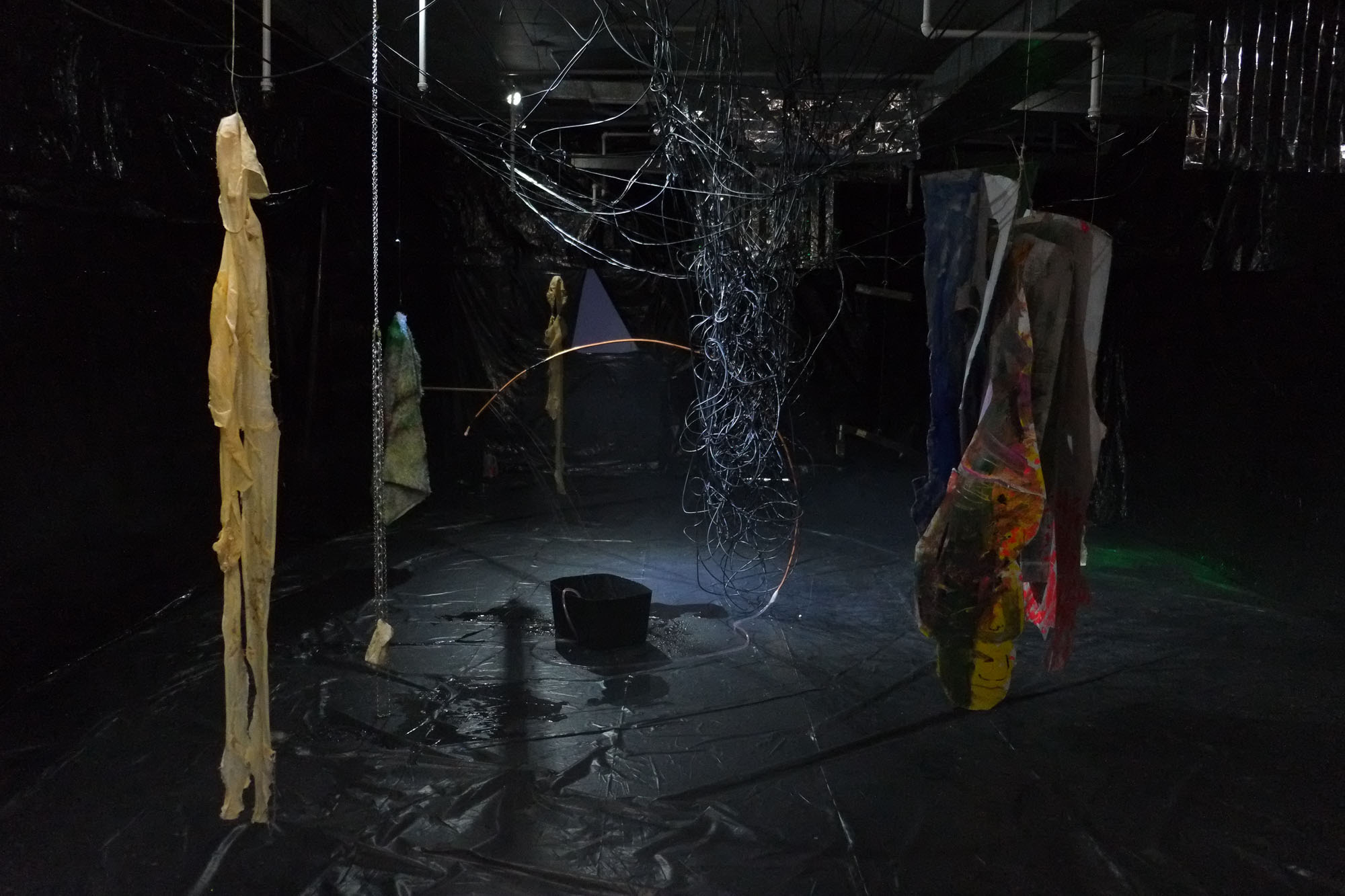
To purchase Drink Deeply & Dream, please visit Printed Matter.
***
Elspeth Walker is a writer and artist based in Brooklyn, NY. Extending from a broad interdisciplinary practice rooted in DIY video and performance, She often displays her own work within the context of collaborative, authorless presentations and experimental exhibitions. She was one-third of Evening Hours through the program’s end in February 2020, and remains a regular contributing editor at Refigural magazine.
For more on Elspeth Walker, see @ekwws
Interview conducted by KLLR DNST with Elspeth Walker for O Fluxo, March, 2021.
OFLUXO is proudly powered by WordPress
